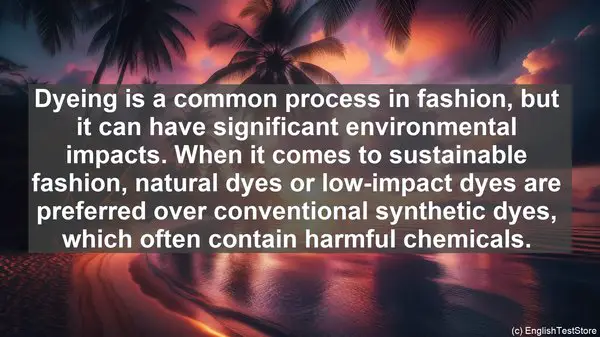Introduction: The Importance of Verbs in Sustainable Fashion
When it comes to sustainable fashion, the right choice of words can make a huge difference. Verbs, in particular, play a crucial role in conveying the actions and processes involved in sustainable fashion design and the use of eco-friendly fabrics. In this lesson, we’ll explore the top 10 verbs that you should be familiar with. Let’s get started!
1. Source
Sourcing refers to the process of finding and acquiring materials for fashion production. When it comes to sustainability, sourcing involves looking for eco-friendly and ethically produced materials, such as organic cotton or recycled polyester.
2. Upcycle
Upcycling is the creative process of transforming old or discarded materials into new products of higher value. It’s a sustainable alternative to simply discarding or recycling items, as it reduces waste and extends the lifespan of materials.
3. Repurpose
Similar to upcycling, repurposing involves giving new life to existing materials. However, repurposing focuses more on finding alternative uses for materials, rather than completely transforming them. For example, using fabric scraps to create accessories or patchwork designs.
4. Dye
Dyeing is a common process in fashion, but it can have significant environmental impacts. When it comes to sustainable fashion, natural dyes or low-impact dyes are preferred over conventional synthetic dyes, which often contain harmful chemicals.
5. Reduce
One of the fundamental principles of sustainability is reducing consumption. In the context of fashion, reducing refers to buying and producing fewer items, focusing on quality over quantity. This helps minimize waste and the overall environmental footprint of the industry.
6. Minimize
Similar to reducing, minimizing involves using fewer resources in the production process. This can include using less water, energy, or chemicals. By minimizing resource use, the environmental impact of fashion production can be significantly reduced.

7. Audit
In the realm of sustainability, auditing refers to assessing and evaluating the environmental and social performance of a fashion brand or production process. This helps identify areas for improvement and ensures transparency and accountability.

8. Collaborate
Collaboration is key in the sustainable fashion industry. By working together, brands, designers, and suppliers can share knowledge, resources, and best practices, ultimately driving positive change and innovation.
9. Educate
Education plays a vital role in promoting sustainability in fashion. By raising awareness and providing knowledge about the environmental and social impacts of the industry, we can inspire individuals to make more conscious choices.
10. Advocate
Lastly, advocacy is crucial for driving systemic change in the fashion industry. By speaking up, supporting sustainable initiatives, and demanding transparency and accountability, we can push for a more sustainable and ethical future of fashion.
